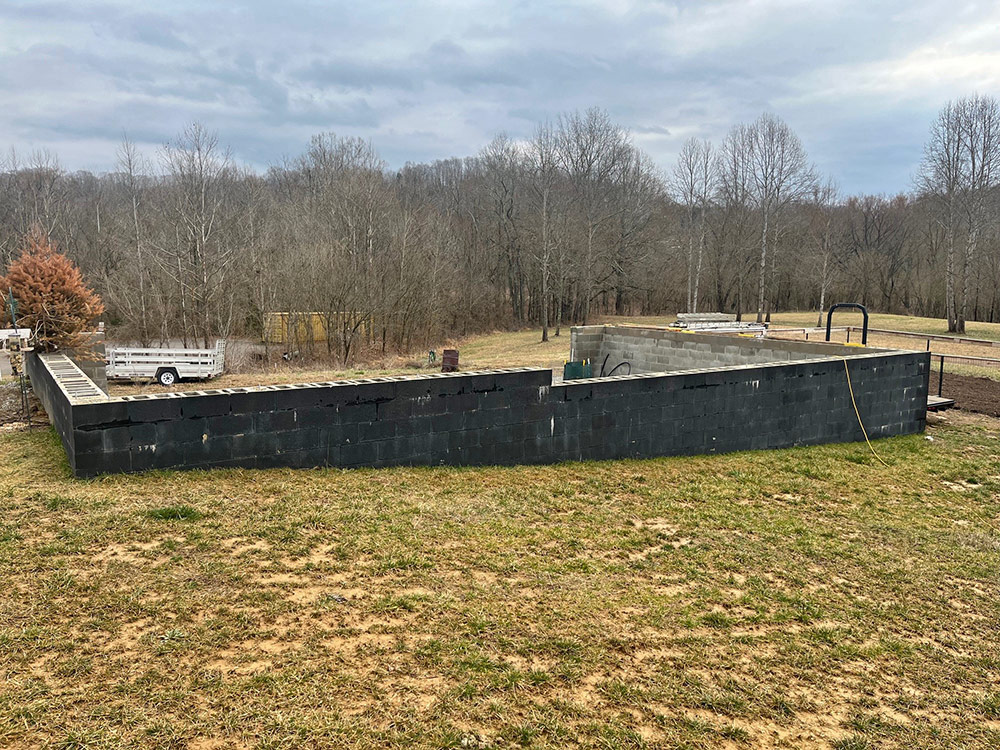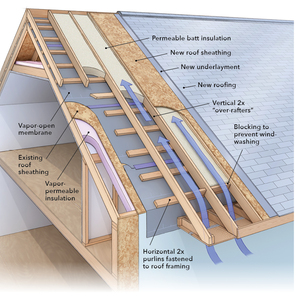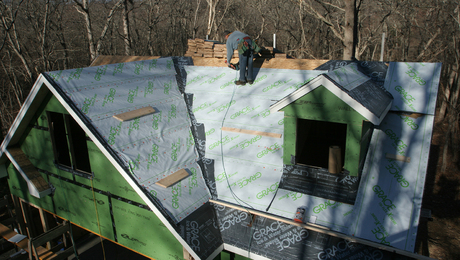Podcast 624: Good Builders, Roof Insulation, and Ice Dams
Listeners write in about water conservation, useful books, and work trucks. Questions include builders in Oklahoma, roof insulation, and fixing ice dams.
Follow the Fine Homebuilding Podcast on your favorite app. Subscribe now and don’t miss an episode:
 |
Joe shares his thoughts on Heather Clark and water conservation. Joseph suggests a book that shows construction methods by era. Christopher sends pictures of his amazing work truck. Alan asks about builders in Tulsa. Chris wonders about hot roofs in Houston. Dave is fixing ice dams.
Editor Updates:
- Mark: Shop building
- Mike: Outdoor site work and homeowner’s insurance
- Patrick’s anvil advice from Erik: “I’m sure everyone would agree that you do not want to use an anvil while it is supported on casters, but the easy solution is to use retractable casters. Pop them down when you want to wheel it around, and retract them when you need to use the anvil. Easy peasy. I realize these extend out from the base, but if your anvil is on a solid wood block, it’s very easy to mill pockets into the base to recess these so they are unobtrusive. This link Workbench Casters Kit is an example from my first Amazon search. You’ll want to find a set that is suitable for the total weight of your anvil and base.”
Listener Feedback 1:
Joe writes: Hey Podcast team,
I appreciate everyone’s thoughts in episode 616 and Bill’s response and clarifications in episode 617 about my idea of Shou Sugi Ban timbers; it was all very helpful! It’s low in the pecking order on my project list, but it’s a project I want to tackle and will be sure to send pictures when I do.
Also, what a great episode with Heather Clark. It really helped to understand what the legislation is offering to businesses and homeowners. It would be a great follow-up article to describe the tax rebates that are available federally, and later what the states may offer. I’m excited to see what training opportunities come out in the next year or so. Delaware recently held a local Phius Certified Builder (CPHB) training that was a partnership with Energize Delaware and New Ecology. It was an awesome opportunity, with a 75% tuition rebate for in-state residents who completed the course. Hopefully more programs like that come up!
A sidebar about the water conservation issue brought up in 618. The EPA WaterSense guidelines are fantastic. They combine a few different ways to reduce water use and hot-water loss, like centrally locating heating and supply designs, insulating hot pipes, and reducing pipe size to meet fixture demand more appropriately. Manifolds can also be effective in this effort, but in water-stressed areas it’s more important to conserve water, so circulating systems take precedent. These look more like traditional branch circuits with an insulated hot-water supply and a small circulator pump (typically on a timer program or motion sensor). It’s better to have a small ding on energy performance than waste water.
Read some, read all, read none, but as always, thanks for the podcast!
Best, Joe
Related Links:
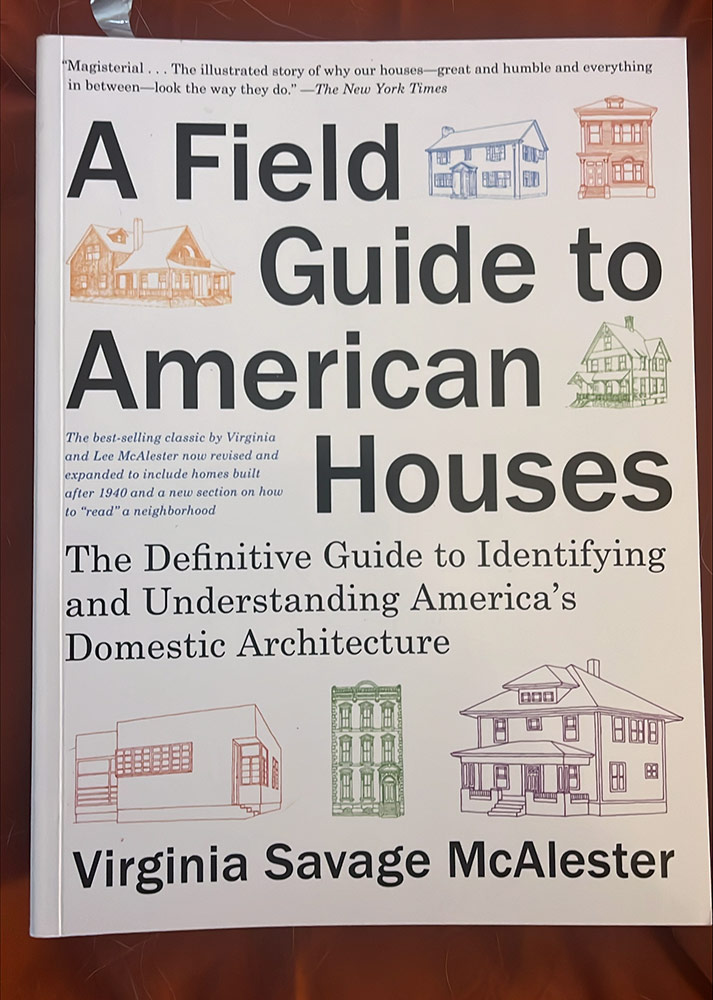 Listener Feedback 2:
Listener Feedback 2:

Joseph writes:
Hey podcast, the book A Field Guide to American Houses is super helpful and does a fair job at breaking down the regional differences in architecture. It isn’t so in depth as to explain the exact building practices, but it’s invaluable in dating and narrowing in the style of the home, which will narrow down the search parameters when you dig into the construction details of one’s particular house.
Listener Feedback 3:
Christopher writes:
I enjoy listening to you all. I do have Brian beat on the age of my work vehicle. I would love to convert this to electric some day.
Keep up the good work.
Best,
Christopher
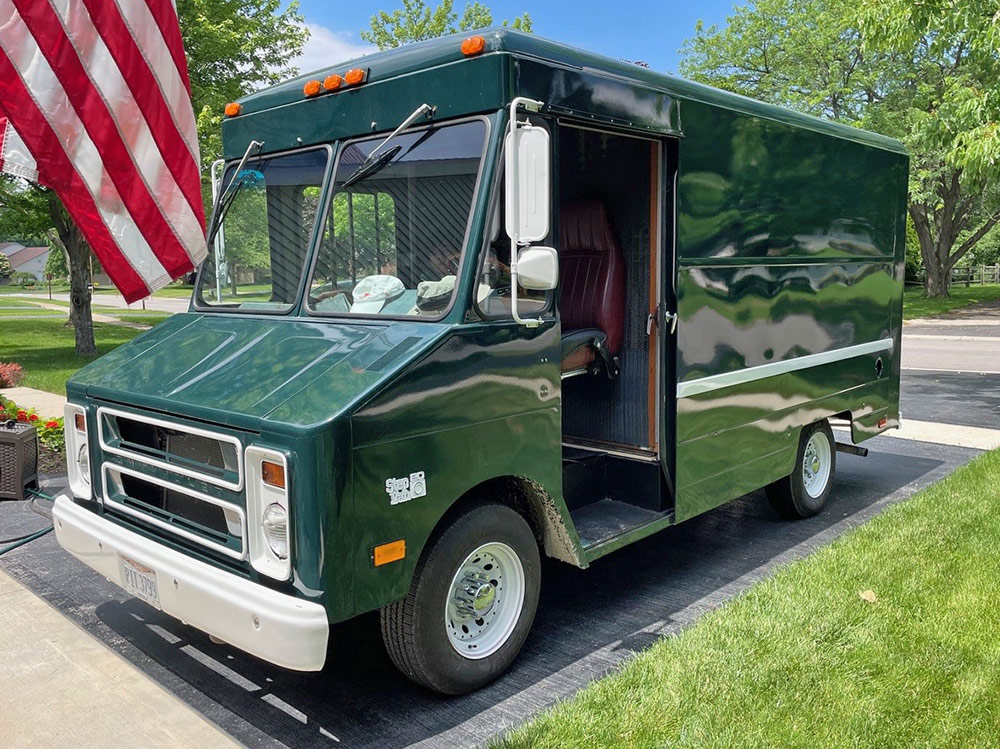 |
 |
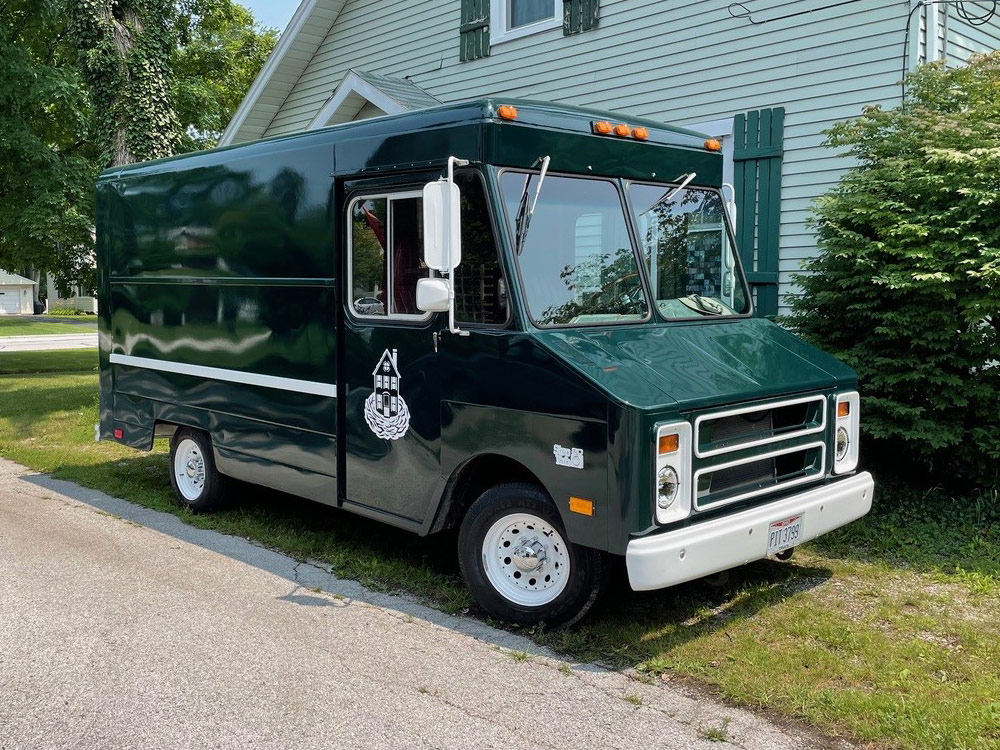 |
Question 1: Can you help me find a builder?
Alan writes: Hi,
Do you have any recommendations for a custom home builder in the Tulsa, Oklahoma, area?
Related Links:
Question 2: What are my options for improving the insulation performance of my roof?
Chris writes: Patrick and crew,
Greetings from the underrepresented climate of Houston, Texas (Climate Zone 2A, Hot Humid). I have a dilemma regarding the insulation strategy for my 1950s ranch-style home. For some background, in 2019, during a remodel all the old dirty and grimy insulation was removed and replaced with an uneven layer of R30 (likely R23 or less in some areas) blown-in fiberglass. I am unhappy with the overall performance of the current insulation. The two choices I see, barring any additional options from y’all, are to blow in more fiberglass or to convert to a cold roof with a conditioned attic.
My current roof assembly is 2×8 rafters at 20-in.-o.c. with ½-in. plywood, covered with a self-adhered underlayment supporting a 1½-in snap-lock, concealed-fastener 24-gauge metal roof. Question: Will I have enough rafter bay to achieve a reasonable R-value?
My proposed cold-roof assembly would be a 1-in. vent channel between the plywood and insulation layer, ½-in. rigid foam pressed into rafter bays, with the remaining rafter cavity sprayed with several lifts of close-cell foam. There will be a continuous vent channel from the soffits to the ridge vent. Question: Is there benefit to using thicker recycled foam instead of ½-in. rigid foam? I believe the thinner foam would be much easier to work with but would result in more cost. Questions: Is this vent cavity even necessary? Is there benefit to spraying additional foam on the exposed rafter edges? The existing insulation on the ceiling deck will be removed and recycled for another project.
Currently, all of the house’s HVAC and ducting runs through the attic space. The furnace is a high-efficiency (96%) direct-ventilation unit, with concentric venting. There is a tankless water heater planned in the future, which will also be a condensing high-efficiency direct-vent unit and located in the attic. The benefit of a conditioned attic for my appliances and ducting is one of the main drivers of this arduous and ambitious project. Question: Is the benefit of a condition attic oversold?
Additionally, I am looking at solar in the next year, to be supported by a S-5! metal roof system (no holes in roof for mounting). The current metal roof is the color Sandstone with an SR = .60 and E=.84, and there may be additional cooling benefits to the attic space after the installation of solar panels.
Should I just forsake the potential benefits of the conditioned attic and spray in a bunch more fiberglass and call it done? I’m having a difficult time quantifying the benefit of all the additional work. Is the additional work better spent air-sealing the hundreds of holes in the ceiling drywall from can lights and decades of remodels? Should I just flash and fill the drywall ceiling deck?
I’ve listened to every episode of the podcast and enjoy it immensely. Please give my regards to all the current hosts, as well as Brian, Kiley, Mark, Matt and Jeff, all of whom I miss hearing. Also, a big shout out to the OG folks Justin, Brian (he’s so great he gets two call-outs), and Rob (who would have just said, “What are we talking about here? Just blow in more fiberglass and call it done.”).
Biting off more than he can chew,
Chris
Related Links:
- Insulating Unvented Roof Assemblies
- Vented and Unvented Roofs
- A Crash Course in Roof Venting
- The Best Roof for Hot & Humid Climates
Question 3: What’s the best insulation method to avoid ice dams?
Dave writes:
We are doing a whole-house gut remodel of a 1954 home in Minneapolis, Minn. (Climate Zone 6A). It is a single-level house with a full basement that has a history of bad ice dams. We want to figure out the best insulation/air-sealing/ventilation strategy to prevent future ice dams now that we have everything opened up to the framing. The exterior of the house (including the roofing) is not being touched. The main insulation challenge is the minimal heel height of the 2×4 rafters—about 4 in. The original insulation (since removed) was blown-in cellulose located only in the attic, with ventilation chutes bringing air in from the soffit vents to about five box vents near the peak of the roof.
The current insulation plan for the remodel is 3-in. closed-cell spray foam in the walls and blown-in fiberglass in the attic, with new ventilation chutes. The problem is that a 4-in. space between the top of the exterior wall and the bottom of the roof sheathing leaves only about 2½ in. of insulation on top of a 1½-in.-deep chute.
I would love to get advice on the following questions:
- Would it be better to forget about ventilation and instead do a hot roof, filling the 4-in. space with spray foam and adding more spray foam under the roof sheathing? (This would be very expensive.)
Sticking with a ventilated attic strategy…
- Would it be better to spray foam the 4-in. space full, eliminate the chutes, and install The Edge Vent above the blow-in height? We’ve never used these vents, and I don’t know how well they work if they are covered in snow and the homeowner doesn’t like the way they look.
- Would it be worth the expense to do 1 to 2 in. of spray foam over the ceiling from above (“sealing the lid”) and then do blow-in on top of that? (In this case the insulators would not install the usual poly on the ceiling from below.)
- Would it be a good idea to install Whirlybird vents to help suck air out of the attic?
- Another factor affecting air leakage into the attic is that there will be HVAC supply ducts running into the attic supply heat to the kitchen and den. These will be insulated to code and sealed from inside with Aeroseal, but would it be a good idea to encase them in spray foam?
Any advice is much appreciated,
Dave
Related Links:
This episode of The Fine Homebuilding Podcast is brought to you by TiteGrab Plus Construction Adhesive

You may know them for their wood glues, but did you know Titebond also has a complete selection of construction adhesives? Designed for a variety of applications, Titebond’s adhesives make any building or home improvement project a breeze with their high-performing and durable formulas. These adhesives are trusted by the professional, providing squeak free subfloor installations, long lasting retaining walls and even fastener free feature walls.
Check out Titebond’s construction adhesives at Titebond.com, including their newest award-winning adhesive—TiteGrab Plus!
Check out one of our latest Project Guides: Energy Retrofit!
Check out our FHB Houses:
Visit the Taunton Store • Magazine Index • Online Archive • Our First Issues • All Access

If you have any questions you would like us to dig into for a future show, shoot an email our way: [email protected].
If we use your question we’ll send you a FHB Podcast sticker!
FHB Podcast T-shirts!
Represent your favorite podcast! Available in several styles and colors. Made from 100% cotton. Find the Podcast t-shirt and more cool products in the Fine Homebuilding Store.
| Fine Homebuilding podcast listeners can now get 20% off anything in the Taunton store, including Pretty Good House.
Use the discount code FHBPODCAST to take advantage of this special offer. |
 |
“Finally, knowledgeable people talking about building reasonably-sized, high-performance houses for normal people with real budgets!” — DanD, VA, 8/19/22, Amazon.com review |
We hope you will take advantage of a great offer for our podcast listeners: A special 20% off the discounted rate to subscribe to the Fine Homebuilding print magazine. That link goes to finehomebuilding.com/podoffer.
The show is driven by our listeners, so please subscribe and rate us on iTunes or Google Play, and if you have any questions you would like us to dig into for a future show, shoot an email our way: [email protected]. Also, be sure to follow Fine Homebuilding on Instagram, and “like” us on Facebook. Note that you can watch the show above, or on YouTube at the Fine Homebuilding YouTube Channel.
The Fine Homebuilding Podcast embodies Fine Homebuilding magazine’s commitment to the preservation of craftsmanship and the advancement of home performance in residential construction. The show is an informal but vigorous conversation about the techniques and principles that allow listeners to master their design and building challenges.
Other related links
-
- All FHB podcast show notes: FineHomebuilding.com/podcast.
- #KeepCraftAlive T-shirts and hats support scholarships for building trades students. So order some gear at KeepCraftAlive.org.
- The direct link to the online store is here.
